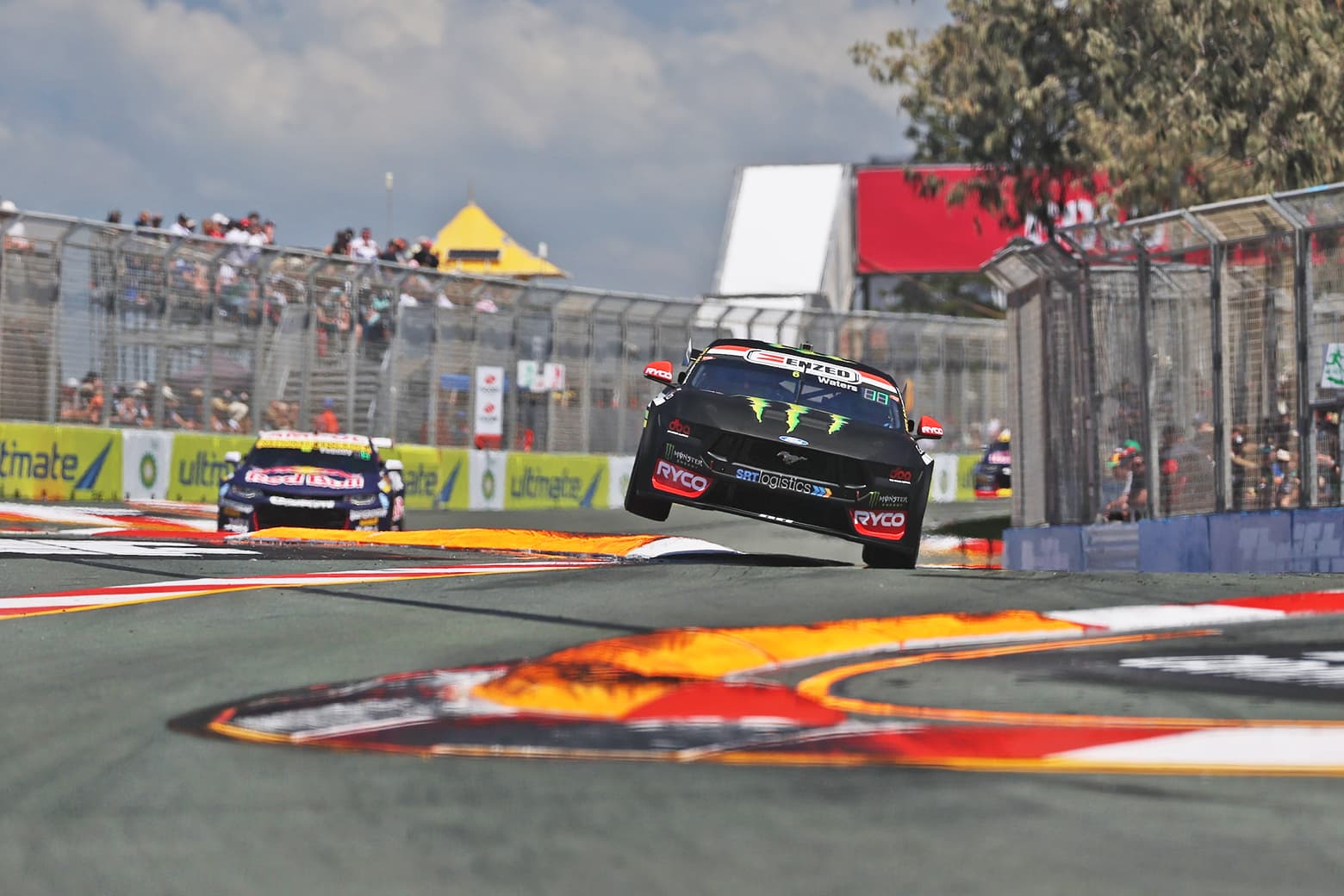Pedders brings new spring rates for 2025 Supercars season
Pedders, Supercars develop two new spring rates for 2025
Pedders also looking at developments in steering componentry
Teams are set to have access to new control spring rates for the 2025 Repco Supercars Championship, following a development process by Pedders.
Pedders has been the Official Gen3 Control Spring supplier to the Repco Supercars Championship since the beginning of the 2023 season, with the current partnership running until the end of 2028.
Following two seasons of Gen3, Pedders and Supercars have worked together to develop two new spring rates for the 2025 season.
Pedders is also looking at some developments in the steering componentry to help with the reliability of the front end, and to make the front ends less susceptible to steering impacts.
Pedders first sponsored Supercars in 2009, with the Pedders Safety Car becoming a major platform for the company's marketing and promotional activities.
In 2019, Pedders joined forces with SupaShock for the successful tender which saw the Pedders Damper by SupaShock used exclusively by all Supercars teams from 2020 onwards.
In 2022, the Pedders R&D department worked closely with the Supercars Technical Department and Erebus Motorsport to develop a world-class motorsport-specific spring, ready for Gen3’s debut.
Gen3 Pedders control springs are manufactured by Pedders at its Melbourne coil spring manufacturing plant, with the current springs successfully utilised during the 2023 and 2024 seasons.
The factory is ISO9001 quality accredited, and this bodes well for stringent tolerances set out by Supercars for the form and fitment required to meet the rigors of Supercars racing.
The springs in a Gen3 race car are subject to extremely high stress – accelerating fatigue, high physical travel (the amount the spring moves up and down) and high forces, while using less material and therefore material mass to absorb the loads.”
Teams base a lot of the chassis tuning the spring rates (the required force to displace the spring), which must be within a very small tolerance band.
From 2025, new springs will be available to teams, with the Supercars calendar expanding from 12 to 13 rounds, and from 24 to 34 races.
“Pedders is a proud Australian, family owned, third generation business. Started in Melbourne, and still here,” Pedders Managing Director Scott Pedder said.
“It’s fantastic to be involved with Supercars, and I'm very proud to announce that our manufacturing plant in Keysborough is going to be delivering a few more options for the drivers and teams in 2025.
“I’m looking forward to the Supercars in 2025. We've got a stiffer spring, we've got some new race formats, we're all race fans and can't wait for 2025.”

Supercars General Manager of Motorsport Tim Edwards hailed the upcoming additions, and praised Pedders for developing the new spring rates.
"We didn't know where the teams would go with the setup of Gen3, and it now appears that they've gone right to the extremities at particular circuits, particularly Bathurst, where they've run out of adjustment,” Edwards said.
"Pedders have been great, they've come on board, they've produced a new spring for us. As of 1st of January, that's when the teams will get access to it.”
When compared to a road car, springs in a race car are subjected to high forces and high loads using lots of the available travel of the spring.
Additionally, springs supplied for Supercars sit on the damper, and also have to fit within the confines on the wishbone, meaning that they are physically smaller than what you would typically see on a road car.
The main job of the spring is to keep the car off the ground, supporting the weight of the car, and how much weight is being transferred to the tyre.
The spring rate can change up and down, which changes how much movement it takes for the weight to be transferred to the tyre.
Pedders springs are manufactured from high tensile spring steel. Approximately 8km of this raw material was procured by Pedders exclusively for the manufacture of the springs. It is machined to within a tolerance of +/- 0.05mm.
The current springs took 18 months of design and development, with several iterations in design levels and manufacturing methods required to reach the high standard required for the Supercars Championship.
After receiving 17 desired spring rates from Supercars and the packaging constraints, Pedders designed springs and kept checking the fatigue life of the springs against the supplied load data.

The original testing was carried out virtually, before the springs were subjected to bench durability testing springs based on the worst-case loads (from race track data).
Once satisfied with the virtual design, Pedders set about making the springs, one rate at a time, to validate the virtual design.
Testing includes repeatedly checking the spring rates pre-test and post-test, as well as the the spring heights to ensure the springs would keep their properties for the life of the spring.
Every spring is tested and certified prior to being released for use.
"The springs we have, they basically control the balance of our car. So, depending on which circuit we go to, we can change the springs,” Walkinshaw Andretti United Technical Director Terry Kerr explained.
"They give us good kerb handling over the kerbs at places like Gold Coast. They give us good pitch control at places like Bathurst, where the loads are really high.
"In 2025, we're going to have a couple of different springs available to us, with the two new spring rates added. We're two years into the Gen3 program now, so a lot of the teams have sort of hit the limits of what's been provided so far.
"The stiffer springs that are coming will allow us to tune up the car a bit better at places like Bathurst where the loads are very high."